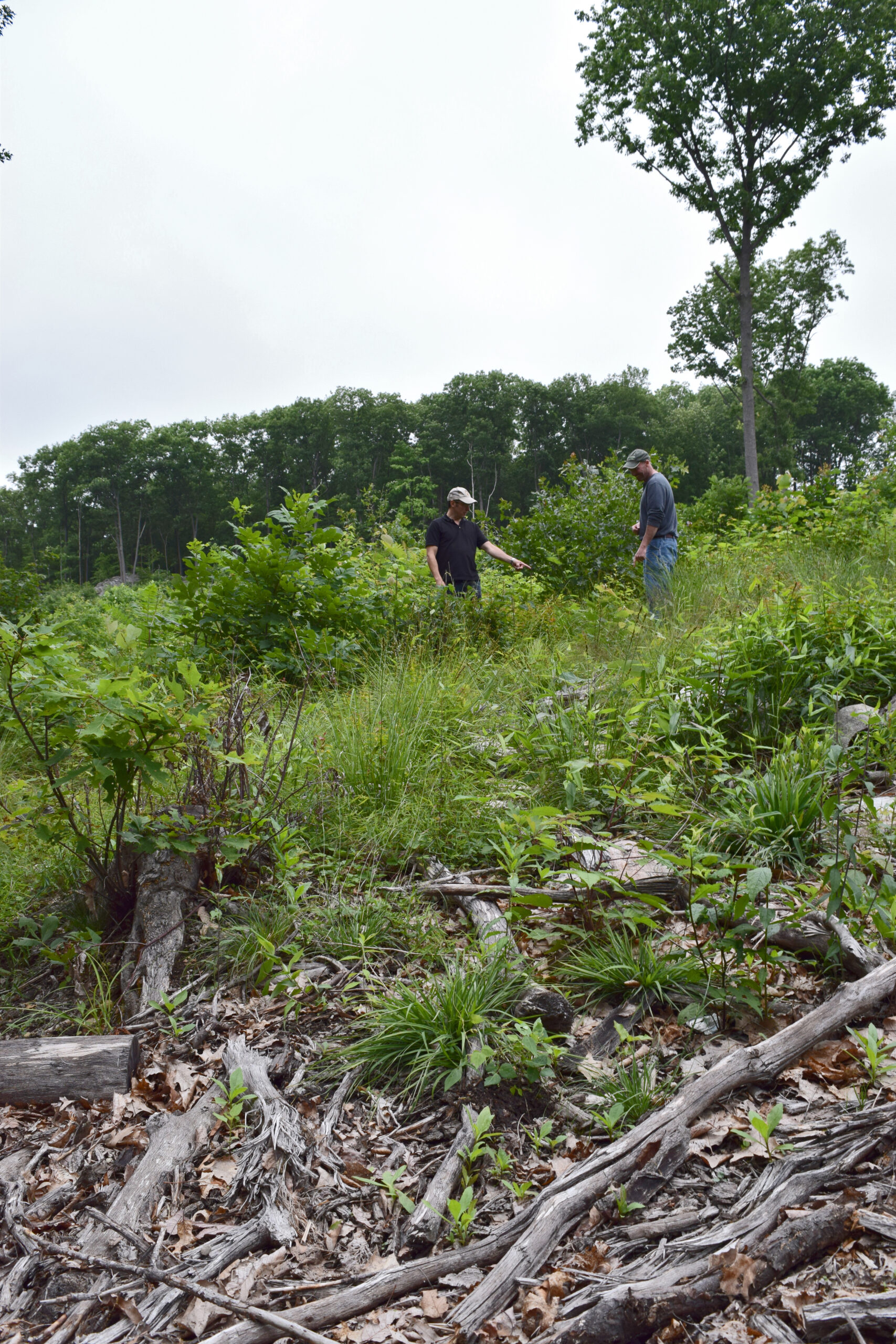Tree harvesting is not the goal of the management at Sparta Mountain WMA, but a tool used to achieve the goal of improving forest habitats.
Completed Forest Management at Sparta Mountain WMA 2010-2022
| Year | Management Type | Acres |
| Winter 2011-2012 | Seed Tree Harvest with Wildlife Reserves | 14.8 |
| Winter 2012-2013 | Seed Tree Harvest with Wildlife Reserves | 13.5 |
| Winter 2013-2014 | Seed Tree Harvest with Wildlife Reserves | 5 |
| Winter 2014-2015 | Shelterwood Harvest | 11.5 |
| Winter 2018-2019 | Single Tree Selection | 17 |
| Winter 2018-2019 | Seed Tree Harvest with Wildlife Reserves | 9.4 |
| Winter 2019-2020 | Seed Tree Harvest with Wildlife Reserves | 9.1 |
| Winter 2020-2021 | Seed Tree Harvest with Wildlife Reserves | 9.2 |
| Winter 2021-2022 | Shelterwood Harvest | 10 |
We use four methods:
1. Seed Tree Harvest with Wildlife Reserves

In these harvests, we retain the best trees to provide a seed source to grow new trees. We also keep or “reserve” individual trees known to have wildlife value, such as shagbark hickory for bat roosting. When managing more than 10 acres with a seed tree harvest, an average of 30% of the canopy is retained. For small projects less than five acres, we retain about 10% of the canopy.
2. Shelterwood Harvest

In this harvest method, the malformed and suppressed trees are removed, to leave about half the canopy. New trees regenerate under the canopy. Approximately 10-15 years after the initial harvest, the overstory trees may be removed to allow the new trees in the understory to mature.
3. Single Tree Selection
In this method, foresters choose single trees to be removed. The trees we keep are the healthiest of the stand and trees we choose to remove are less desirable—usually the suppressed, insect infested, hazardous trees or trees that have poor structural quality. The goal is to create a diverse forest stand with multiple tree ages and sizes. This method is low-intensity over a large area. This will improve the vigor of retained trees and allow more light to reach the forest floor.
4. Group Selection with Wildlife Reserves
Some tree and shrub species that are valuable to wildlife can only regenerate in full sun. To foster the growth of these plant species, we create small openings of less than an acre that mimic natural damage caused by snow or wind storms. We also keep or “reserve” individual trees known to have wildlife value, such as shagbark hickory for bat roosting. We use this method in Sparta Mountain WMA where the forest has been impacted by the invasive insect hemlock woolly adelgid.
Clearcutting
Please note, while clearcutting is a method used for harvesting, there will be no clearcuts at Sparta Mountain WMA.
Frequently Asked Questions
What happens to the cut trees?
Depending on the species and quality, three things might happen to the cut trees.
- A contractor might pay us for the trees. These trees will be taken off-site to be turned into lumber, wood pulp, wood chips, and other wood products—products we use every day.
- Some cut trees stay on-site to deter deer and to decompose back into the soil.
- Sometimes the trees cut don’t have much market value but need to be removed so the new trees and shrubs have room to grow. In this case, DEP will pay a contractor to remove the cut material.
What are you doing with the profit from selling logs?
If any money is made from selling the wood, we put that profit towards the many other parts of this project that need funding such as controlling invasive plants, surveys for endangered plants, water quality testing, and planning and implementation of future habitat projects.
What are you doing with the excess money after you pay for other activities at Sparta?
There is no excess money; the sale of logs only offsets a small portion of the entire project’s cost. New Jersey Audubon Society and NJ DEP are the organizations that fund this management plan with the goal of improving the forest habitat.

 Official Site of The State of New Jersey
Official Site of The State of New Jersey

